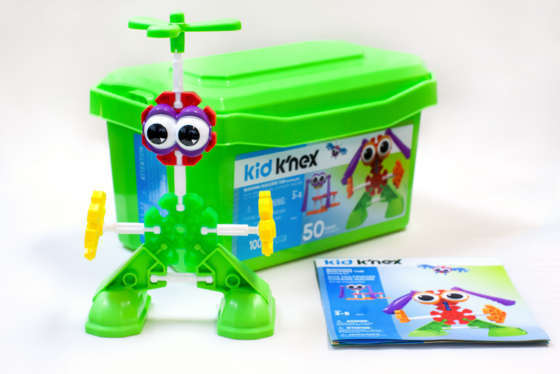Finding the perfect present for family and friends over the holidays is a struggle for many consumers.
When it comes to selecting gifts for kids, however, toys are an easy and fun choice. After all, there’s no greater joy than watching a child squeal in excitement upon opening a coveted game, doll or other popular plaything.
With 41 percent of consumers planning to buy a toy this holiday season, according to the National Retail Federation, it’s clear that shoppers believe toys are an ideal gift for little ones. The thrill over a new toy, however, can quickly diminish with each new present a child receives. This often means more clutter than joy and less appreciation for the items they are given, experts say.
“When kids are surrounded by a stream of new toys, each one becomes less special,” said Amy McCready, founder of PositiveParentingSolutions.com and the author of “The ‘Me, Me, Me’ Epidemic: A Step-by-Step Guide to Raising Capable, Grateful Kids in an Over-Entitled World.” “Well-meaning relatives want to see kids happy and fulfilled, but kids who get everything they want … take their material items for granted.”
[See: 12 Ways to Be a More Mindful Spender.]
Some experts believe an overabundance of toys can also interfere with a child’s development and behavior.
“Too many toys can make kids feel anxious, contribute to the inability to focus and lead to shorter attention spans,” said Corinne Roth, writer and founder of ThePragmaticParent.com. She added that children who have fewer toys rely more on their imagination and are ultimately more creative in their play.
Whatever a parent’s reason for wanting to limit toy gifts, it’s important to set expectations ahead of the holidays. Follow these tips to get the conversation started and learn how to request alternative items.
Talk it out. The only way to change gifting habits is to take action. Talking openly and honestly about this with family ahead of holiday celebrations is essential. Experts suggest taking a positive tone and expressing gratitude for past presents while focusing on family values as the reason for putting a limit on gifts.
“Let relatives know that while you’re so appreciative of their thoughtfulness, you’re working hard to take the ‘gimme’ out of gifting when it comes to your child and hoping to create a more-meaningful, less-materialistic holiday,” McCready said.
By highlighting items a child really needs or suggesting alternative ideas, such as an experience or activity, parents can guide loved ones toward making more meaningful gift choices without coming off as too restrictive. For those who are stuck on toys, Jennifer Porter, an etiquette coach and owner of Satsuma Kids Shop in Seattle, advises that parents gently suggest an item that will challenge their child’s imagination, such as those that focus on arts and crafts.
Set gift rules. Establishing ground rules for gifting makes for more-grateful kids and less-overwhelmed parents. Although the idea of rules sounds restrictive, there’s plenty of opportunity to make it fun for loved ones. Roth suggests implementing the “four-gift rule,” which directs close relatives, like grandparents, to give one item the child wants, one item they need, one item to wear and one item to read.
“The four-gift rule is a great compromise, especially for grandparents,” Roth said. “Our one exception to the gifting rule is that books, crafts, art supplies or STEM kits [which offer educational, hands-on activities inspired by science, technology, engineering and math] are always welcome. Just not in abundance.”
Send a wish list. Wish lists are a win-win for everyone. Kids enjoy creating them, parents can control what’s included, and relatives appreciate the suggestions. “Although asking for certain items may feel awkward at first, gift-givers prefer to give something that will be truly appreciated and helpful rather than something that will be looked at once and stored away forever,” said Jennifer McDermott, consumer advocate for Finder.com, a comparison platform and information service that helps consumers make better decisions with their money.
McDermott recommends using sites like CheckedTwice, where families can add items from various sites in one place to share with family and friends. She also advises that parents be mindful of everyone’s budget and plan to include a variety of items at different price points.
[See: 7 Habits You Can Learn From Highly Successful Savers.]
Suggest a split gift. Parents may find that certain relatives prefer to give toys for the instant gratification. After all, children are more likely to jump for joy when they open a gift they can play with immediately over money or clothing. In this case, experts suggest that loved ones give a “split gift.” This means giving a small inexpensive toy along with something that is needed.
“Speak to your close friends and family members who normally gift to your children and ask them if they would consider a small toy instead, along with a gift card or money toward college savings,” said Shannon Ryan, certified financial planner and founder of The Heavy Purse LLC. “This way, they get the joy of watching them open something.”
Encourage experience gifts. Instead of more stuff, encourage family and friends to think beyond physical gifts and suggest experiences that can be enjoyed together. With no limits to the types of experiences available, loved ones can make this gift very unique and special. From a camping trip to a painting class to a theme park outing, the ideas are limitless, and kids will enjoy the anticipation leading up to the event. Gift-givers can also get creative with packaging by combining a certificate for the activity with a coordinating item, such as a flashlight for a camping trip, for example.
“For experience gifts that are likely at a future date, it’s fun to give something for immediate gratification,” said Porter. “I recommend a little $5 item that’s thematically relevant to the gift. I also like to wrap up a photo of the experience in a box so that there’s a little something to open.”
[See: 12 Habits of Phenomenally Frugal Families.]
Keep toy clutter from building up. Before another round of presents is exchanged this holiday season, get ahead of the clutter by purging and donating unwanted toys. Families should also set new rules for managing the abundance of toy gifts kids receive by setting a rule. “If a new toy comes in, the child has to choose an old one to donate,” McCready suggests. Not only does this control the clutter, but children learn a valuable lesson in giving to others, she said.
More from U.S. News
10 Money-Saving Websites to Check Before Shopping
Prepare Your Finances for the Holidays
10 Ways to Shop Smarter at the Grocery Store
No More Toys, Please: How to Request Alternative Gifts for Your Kids originally appeared on usnews.com








